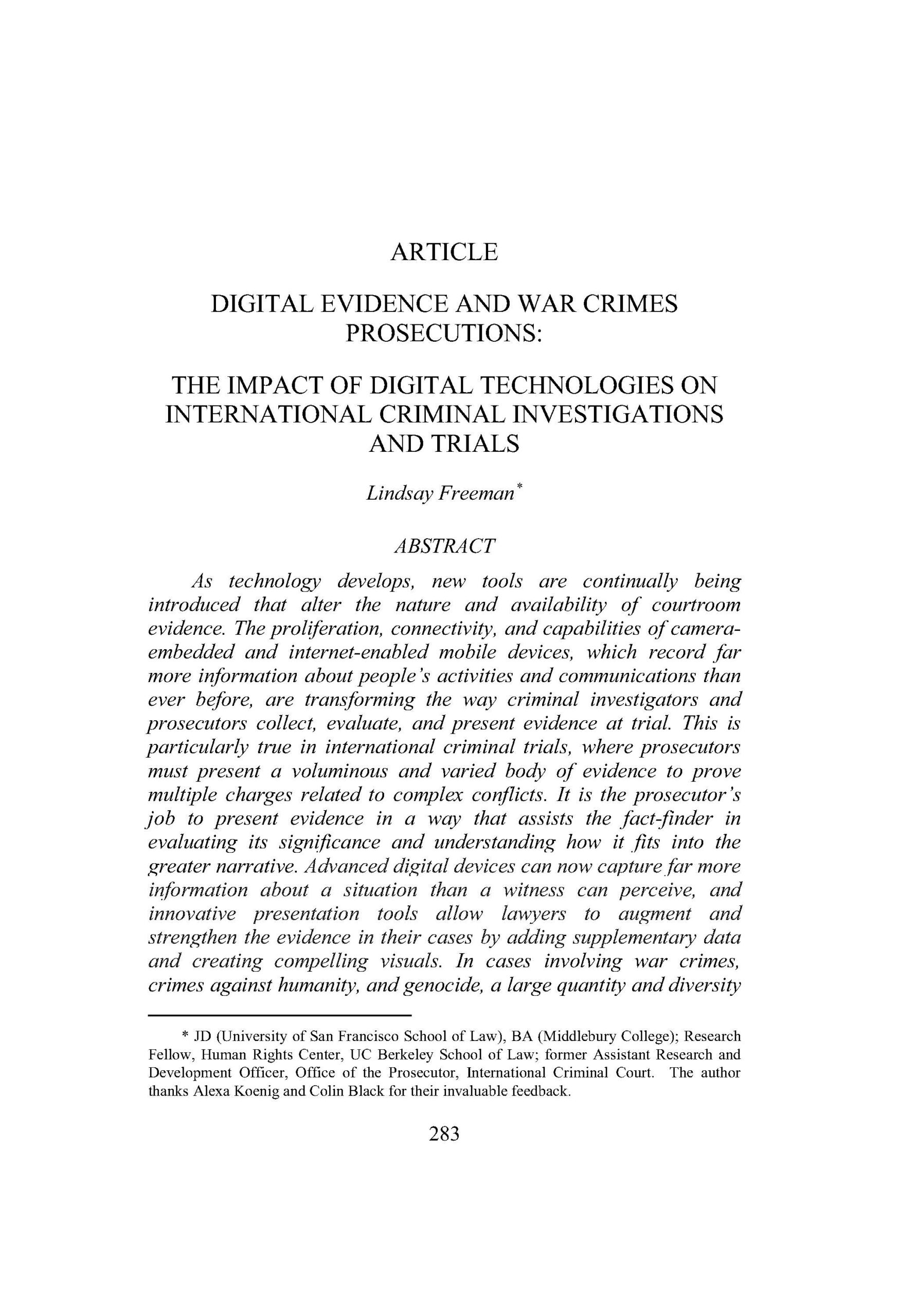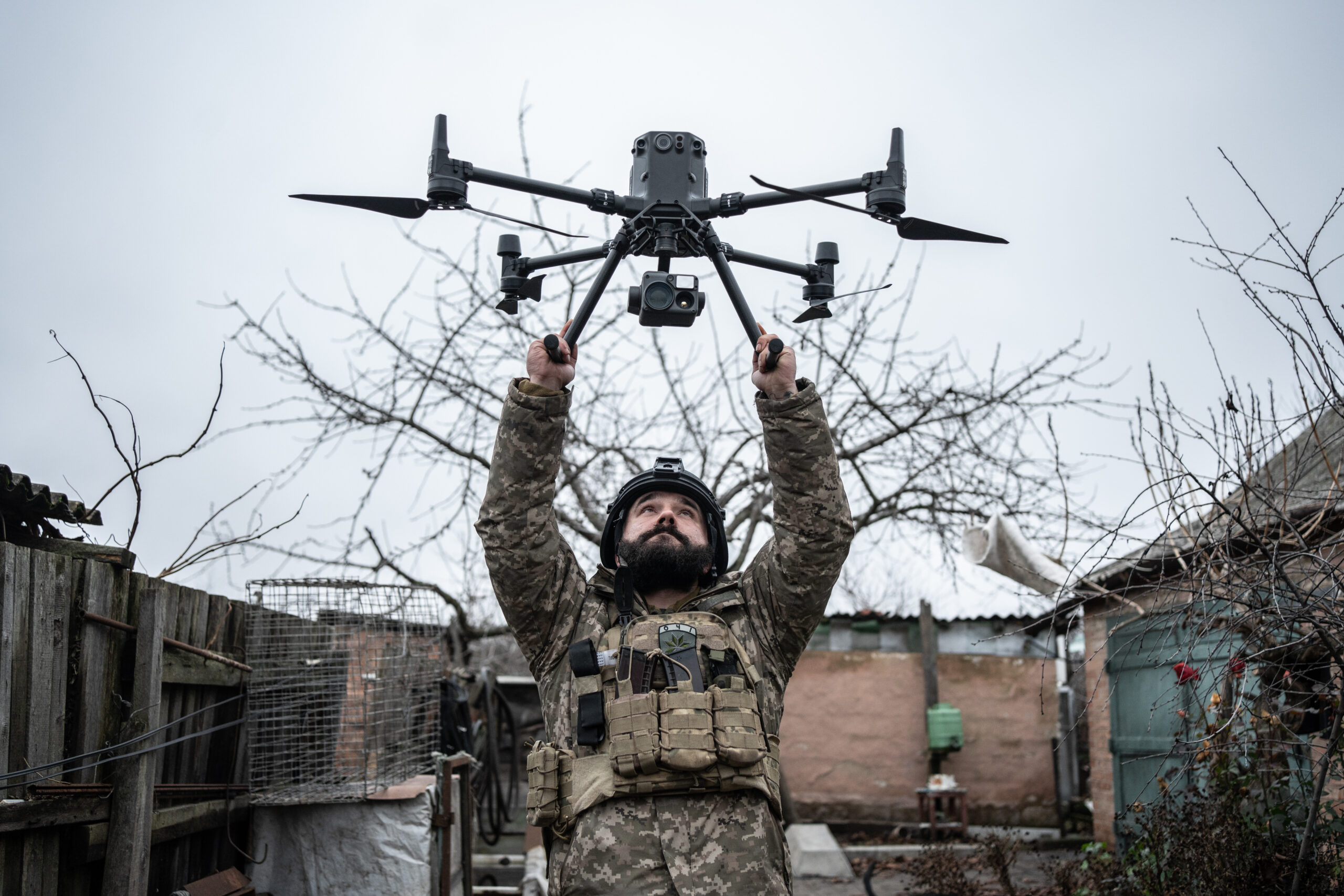Digital Evidence and War Crimes Prosecutions: The Impact of Digital Technologies on International Criminal Investigations and Trials
Download PDFSummary
As technology develops, new tools are continually being introduced that alter the nature and availability of courtroom evidence. The proliferation, connectivity, and capabilities of camera embedded and internet-enabled mobile devices, which record far more information about people’s activities and communications than ever before, are transforming the way criminal investigators and prosecutors collect, evaluate, and present evidence at trial. This is particularly true in international criminal trials, where prosecutors must present a voluminous and varied body of evidence to prove multiple charges related to complex conflicts. It is the prosecutor’s job to present evidence in a way that assists the fact-finder in evaluating its significance and understanding how it fits into the greater narrative. Advanced digital devices can now capture far more information about a situation than a witness can perceive, and innovative presentation tools allow lawyers to augment and strengthen the evidence in their cases by adding supplementary data and creating compelling visuals. In cases involving war crimes, crimes against humanity, and genocide, a large quantity and diversity of evidence is necessary to explain the context of the conflict and to prove the requisite elements of crimes and modes of liability. By examining the evidence and presentation techniques used in recent cases before international criminal courts, this article illustrates how war crimes prosecutions are evolving to meet the challenges and advantages of modern times. Part II explains the applicable law and describes how the use of emerging types of evidence in international criminal cases has expanded and been refined over the years. Part III analyzes three exceptional, yet emblematic cases from 2016, which call attention to an important trend that is predictive of the future use of digital evidence in war crimes prosecutions. Part IV discusses cases on the horizon and what these technological developments mean for members of the international justice community.

